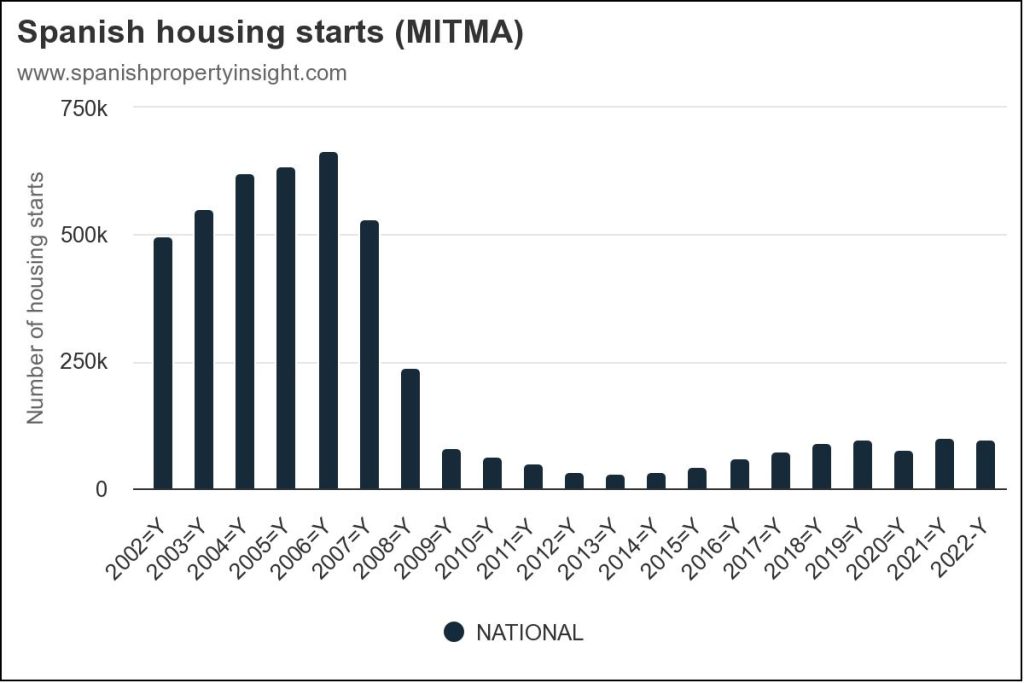

The glut of new homes where nobody wants to buy or rent declined by less than 1% last year, whilst new-builds in desirable locations are as scarce as ever.
There were 444,546 newly-built but never previously sold Spanish homes on the market at the end of 2022, a decline of just 0.95% compared to the end of 2021, according to the latest report on the new housing stock published every year by the Spanish government (MITMA department). The chart above illustrates the evolution of the new housing inventory every year from 2005.
The stock of built-but-never-sold homes exploded from 195,000 units in 2005 to 650,000 in 2009 as a result of Spain’s runaway construction boom in the ‘00s after the introduction of the euro. A two or three year lag between starting and delivering residential developments meant that the supply of new homes on the market continued to increase for several years after demand had collapsed.
Since 2009, the glut of new homes on the market has only declined by a modest 32% from 650,000 to 444,500 at the end of last year. The next chart showing the annualised change in the overall number of newly-built but never-previously-sold homes in Spain dramatically illustrates how fast the glut inflated, and now slowly it has been decreasing. It has declined by less than 1 percent in three of the last four years.


Where in Spain is the glut located? The biggest stock at the end of last year was in Catalonia with 79,721 units, 18% of the total new-home glut, and 2% of the total housing stock in Catalonia, followed by the Valencian Region, Andalusia, and Madrid. In the Balearics there were just 5,921 unsold new-homes at the end of 2022, a mere 1.3% of the total Spanish stock of new homes for sale. You can get much more information and data on the glut of new homes for sale in Spain in the Data Hub.


No demand for boom-era homes
Most of the inventory left over from the boom period when the glut emerged are located in parts of Spain where nobody wants to live, which explains why the Spanish glut remains stubbornly high year after year, and is still almost 70% of what it was in 2009. All the new homes in Spain that people might actually want to live in were sold off years ago, or occupied by squatters. So when Spanish President Pedro Sánchez promises to help solve the housing crisis by converting boom-era homes now owned by the SAREB (bad bank) to social housing, you can be confident of empty promises and empty houses.
Whilst the glut is absorbed at a snail’s pace that costs Spain a fortune to finance (all that property and capital comes at a large cost to bank shareholders and the taxpayer) the new home building industry remains in the doldrums, as you might expect with such a large glut in the background (and the fact that developer financing is now much more restrictive). Last year Spain started less than 100,000 new homes, compared to 650,000 in 2006 (a boom year) and more than double that in a typical year before the boom. Spain is currently building far fewer new homes than it needs in places of high-demand, especially in Barcelona, where far-left housing policies have caused a total collapse in new home building.







